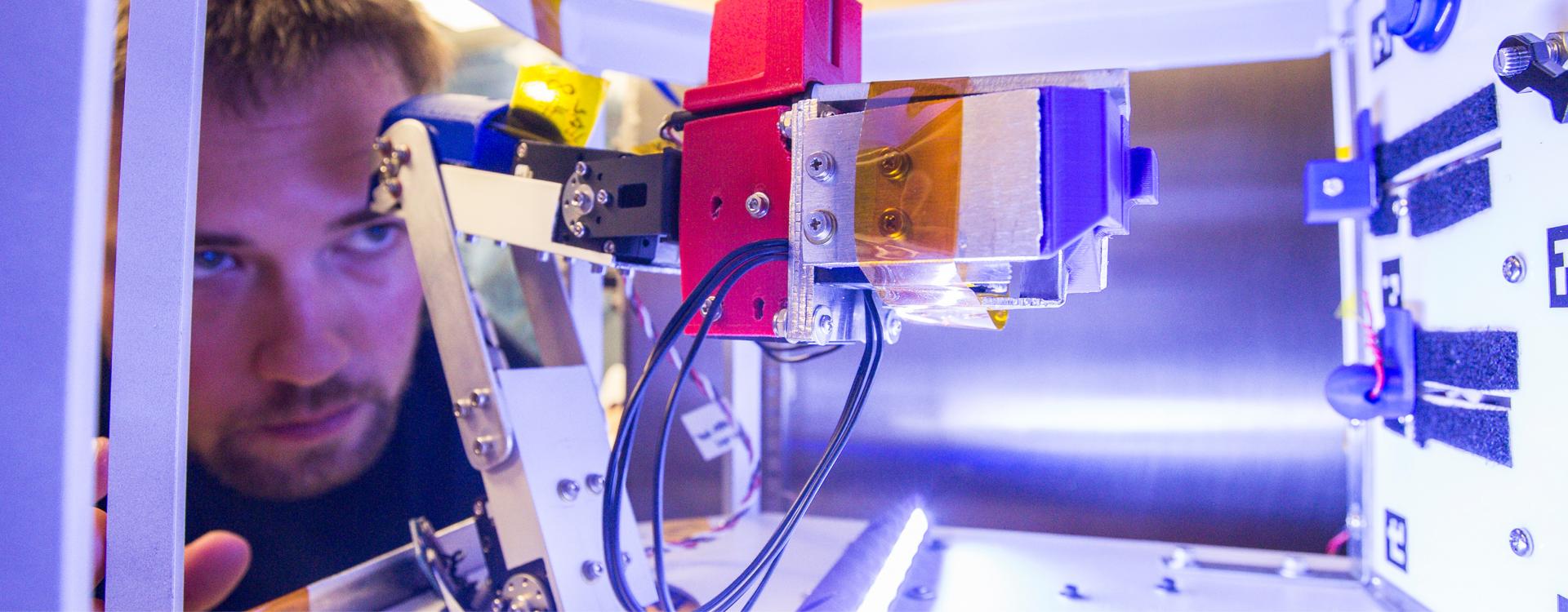New virtual reality glasses enhance student training in Durham Tech Public Safety program
 Through a pair of dark lenses, Durham Tech paramedic student Thomas Doty could see a patient lying down with a blood clot in their right leg.
Through a pair of dark lenses, Durham Tech paramedic student Thomas Doty could see a patient lying down with a blood clot in their right leg.
He reached out to navigate through the augmented reality simulation as he watched the scene unfold.
The simulation was viewed through the Emergency Medical Science program’s new set of augmented reality glasses – a device that allows its users to virtually view what happens inside the body it’s hit with a disease or medical condition.
The program purchased its new set of Microsoft HoloLens from CAE Healthcare with a $10,000 grant earlier this spring and has been testing them for several weeks.
“We thought it would be a really nice tool to have available to students,” said Steve Wilson, the program’s Clinical Coordinator and Instructor.
The technology immerses the wearer with 360-degree, 3D imagery, virtually transporting them into a medical scenario. In addition to walking through the procedure, the wearer also gets to observe what would be occurring underneath the patient’s skin. A voiceover guides them through the process.
“When they’re looking through those glasses, they are able to see a hologram of a body or portion of the anatomy like the heart,” Wilson said.
The faculty purchased three different modules for their device: cardiac, which focuses on the heart; neurogenic, which highlights the nervous system; and obstetrics, which covers childbirth.
When they have the glasses on, the wearer will notice a navigation menu in the corner. That menu allows the wearer to move forward or backward through the scenario, to get more information, or to return home. In order to use the menu, the wearer has to raise their hand forward until they can see their fingers touch the icon, and then pinch.
Doty, who served in the U.S. Army and has previous emergency health care experience, recalled viewing a simulation of a patient experiencing a heart attack that escalated into a cardiogenic shock.
“It’s nice to see the deterioration in a perfect simulation rather than seeing the progression in the field,” he said. Other modules show the differences between a complicated and a standard childbirth and how conditions such as pulmonary embolism and sepsis affect the body.
Student Josh Adams, a former U.S. Marine Corps firefighter with some medical training, believes the realness of the scenarios will make a deeper impression on the viewer than the more traditional teaching methods.
“As many scenarios as you run, they help you to recognize things, but until you actually see somebody with the symptoms that are being described, it never really sets in,” he said. “A system like this is going to make people way more prepared to recognize things in the field.”
The glasses have a feature that allows the running video to be projected onto a screen so that others can consecutively see what the person wearing the device is seeing.
“You can have the instructor talking about it or have the student (that’s wearing the glasses) talk the other students through it,” Wilson said.
The faculty is waiting until it secures an appropriate size screen before enacting this feature.
The program has another simulation tool called the iSimulate which essentially serves as a simulated cardiac monitor.
“Everything is scenario-based,” said David Silfen, the program’s Director and Instructor. “We try to stimulate all the senses. We try to utilize everything.”
Wilson said there need to be some guidelines in place for the different instructors and users before the glasses can be implemented into the classroom. When that happens, Wilson said he can see it benefitting students throughout the program.
“This is kind of a stepping stone in the right direction of bettering the training of future paramedics and EMTs,” Doty said. “I think it can make better medics. When you have better medics, you save more lives.”
For photos, video, and more information on the Microsoft HoloLens under CAE’s usage, visit caehealthcare.com/hololens.
The Emergency Medical Science program at Durham Tech is based at the Orange County Campus and offers an associate’s degree to become an entry-level paramedic as well as various certificates for students looking for continuing education training.
For more information on the program and all its offerings, visit durhamtech.edu/academic-programs/emergency-medical-science or durhamtech.edu/continuing-education/emergency-medical-services-continuing-education.
Related
• Orange County Campus hosts new, fast-track paramedic course for Air Force personnel: Jan. 28, 2020
Contact Stephanie Turner, Marketing and Media Relations Coordinator, at turners@durhamtech.edu for more.

